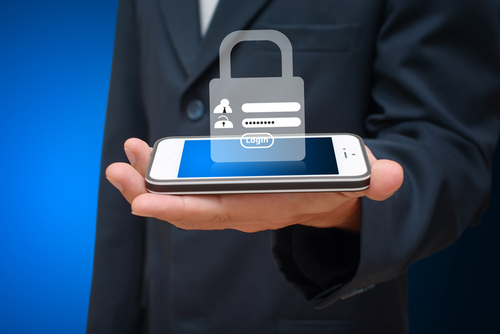
Mobile security is on everyone’s mind lately, especially after Apple resisted cracking open an iPhone linked to the San Bernardino shooting last December. Apple’s CEO denied the FBI’s request for assistance, opening a Pandora’s box of questions and concerns about personal security in the ever-increasing digital age.
Mobile security, for most people, isn’t quite so complicated. Most of us aren’t troubled by national security; we just want to ensure our data is protected from online criminals, common thieves, and perhaps a nosey family member. Preventing these types of mobile security threats is easier than you think and doesn’t require much time or effort.
Password Perfect
Nearly every phone on the market offers some kind of basic security feature in the form of a PIN, password, or pattern that protects the phone from being picked up and immediately accessed. This is your first line of defense and one that could keep a lost or stolen phone from becoming a serious problem.
Passwords or PINs should be unique and not something a stranger (or someone you know) could easily guess. For example, using a common sequence of numbers like 12345 is not an effective security password. This is true of every password you set on your phone, in apps, or for other personal features on your phone.
Be warned, there are tools available to help people unlock smartphones, even those with a good security password. For a cool $350, the IP-BOX iPhone Password Unlock Tool will scroll through every 4-digit commination until it unlocks the phone. So far, these devices can only be sold to law enforcement, but that doesn’t mean one couldn’t end up in the wrong hands.
Patch It Up
Setting a strong password on your phone is just the beginning of better mobile security. Another important step everyone should take is getting regular software updates. Most phones will notify a user when there’s a new patch available, but many ignore these messages and fall behind on updates.
Updates and software patches are an important part of maintaining healthy mobile security. When developers discover a weakness in their software, they release patches to prevent future problems. Security threats are in constant flux, and a phone’s software can be revised several times throughout the year. Make it a point to update your phone when these notifications come through.
Avoid Bad Apps
When it comes it apps, the best advice is to practice caution. Apps may contain harmful espionage software called malware that could mine personal data from your phone. Choose apps that are well known and that have been sufficiently reviewed by other users. However, caution might not be enough.
Last September, dozens of legitimate apps in the App Store were infected with malware called XcodeGhost. Thousands of people were affected by the security breach into the iOS ecosystem, surprising many who assumed Apple’s closed systems were safer than Android’s. What’s most troubling about the invasion is that many of the infected apps were popular, well-reviewed products like Angry Birds 2 and WeChat.
Don’t Risk a ‘Jailbreak’
The term ‘jail breaking’ is used when a smartphone, tablet, or game console is purposefully hacked to bypass the software’s Digital Rights Management (DRM), which limits the kinds of software that can be enabled on the device. It’s part of most phone security software, and without it, users are able to customize parts of the devices normally limited by the DRM.
This is never a recommended strategy for personalizing a mobile device, and most often will result in problematic behaviors from the phone. It’s also not the way to keep your phone secure from other potential threats.
Make a Copy
Finally, one of the best ways you can protect yourself is by regularly backing up your phone’s data to another device. In the event that you lose data, or the entire phone, it’s a lifesaver to have a recent copy of saved data on another device at home.
Better mobile security is easily achieved by following these 5 tips that you can implement today.